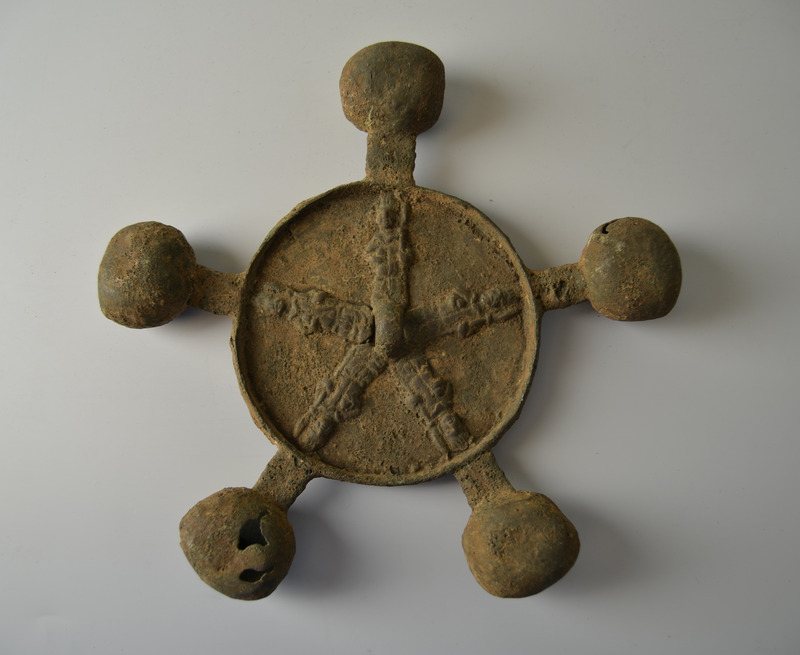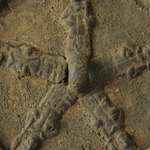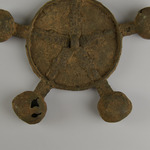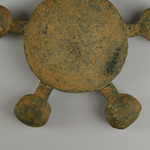| Native Name | Goreikyo (五鈴鏡) |
| Object Number | 48-2-5 |
| Current Location | Collections Storage |
| Culture | Japanese |
| Provenience | Japan |
| Period | Kofun |
| Section | Asian |
| Materials | Bronze |
| Iconography | Human Figure | Spear |
| Description | Cast bronze mirror with five jingles (Goreikyô 五鈴鏡 ) on limbs around the circumference. The back of the mirror has an attachment loop in the center. Five relief depictions of a human figure, carrying a spear in one hand and an unidentified object in the other, radiate out from the attachment loop to points on the raised circular rim corresponding to the position of the five jingles. Bronze mirrors were introduced to Japan from the East Asian mainland and the Korean Peninsula during the Kofun period (3rd - 7th c. CE), when they were buried in the tombs of the elite. Besides imports, mirrors were also produced locally, often with interesting innovative features. The addition of jingle around the circumference of the mirror, as on this example, is one such distinctive local innovation. Kofun-period clay figurines (haniwa) sometimes depict female religious specialists with five-jingle bronze mirrors hanging from their belts. It is likely that this example had a primarily religious function. |
| Credit Line | Gift of Elise Biddle (Mrs. Harald) Paumgarten, 1948, 1948 |
| Other Number | L-2-353 - Old Loan Number |
Report problems and issues to digitalmedia@pennmuseum.org.





